Best smart telescopes 2025: Observe stars, galaxies and nebulas with ease this holiday season.
The best smart telescopes are great for relaxed stargazing with go-to technology for easy astrophotography during the festive season.

Smart technology has reached the astronomy world. The results? We now have powerful telescopes that require little to no astronomy know-how. These smart telescopes can find whatever you are looking for: Stars, galaxies, planets and nebulas. With a smartphone, you can then view your night sky target as the telescope does the imaging for you. They work by imaging the night sky, meaning you get to see and keep amazing astrophotographs of your chosen celestial object!
These scopes tend to be more expensive than the rest of the best telescopes but we've selected smart telescopes to suit a range of budgets. For when you get your smart telescope, we have included the upcoming month's top skywatching highlights to train your smart telescope on. If you want a detailed breakdown of skywatching for the whole month, check out our thorough night sky guide.
The best smart telescopes we recommend in 2025
Why you can trust Space.com
Best overall
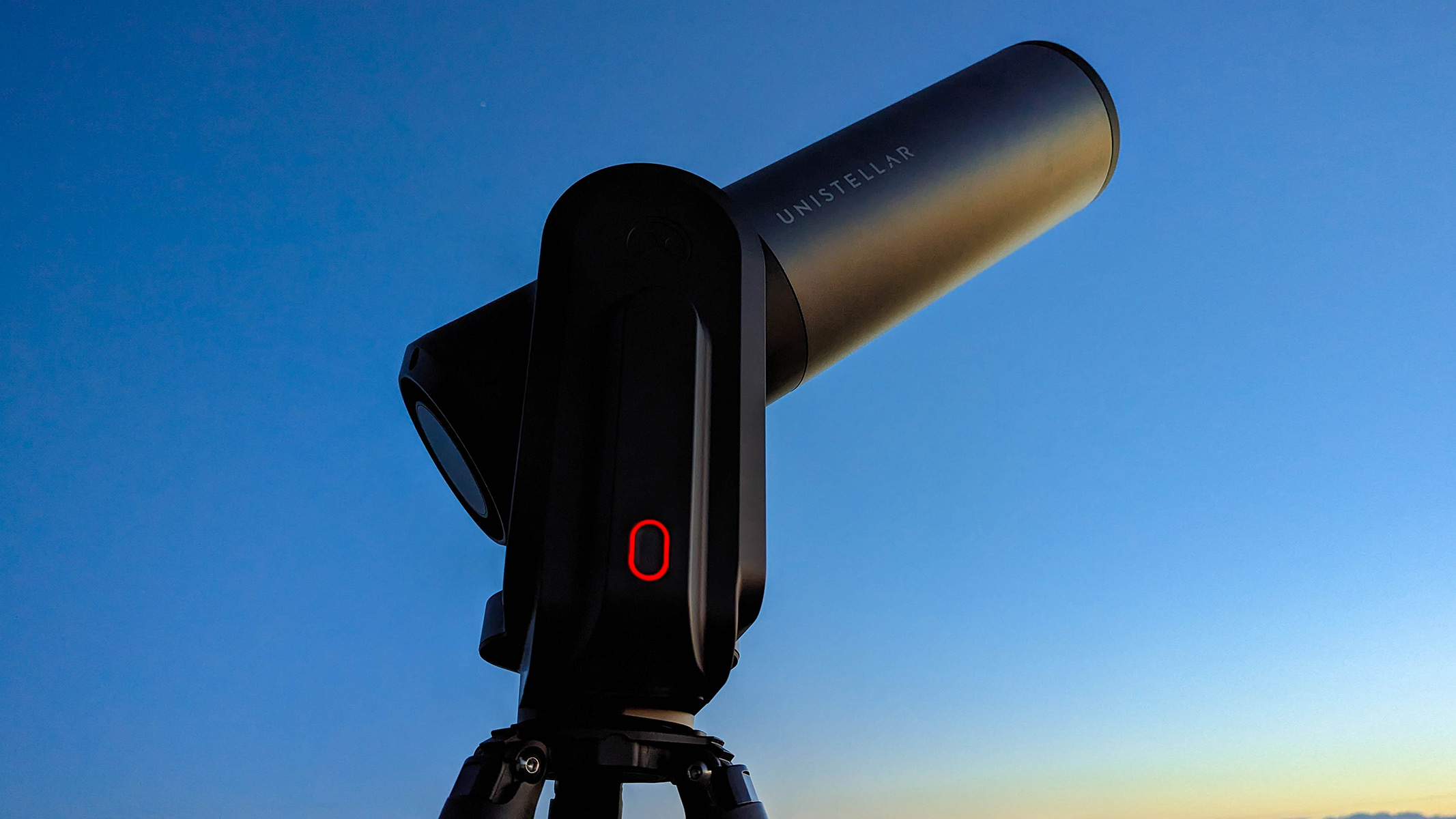

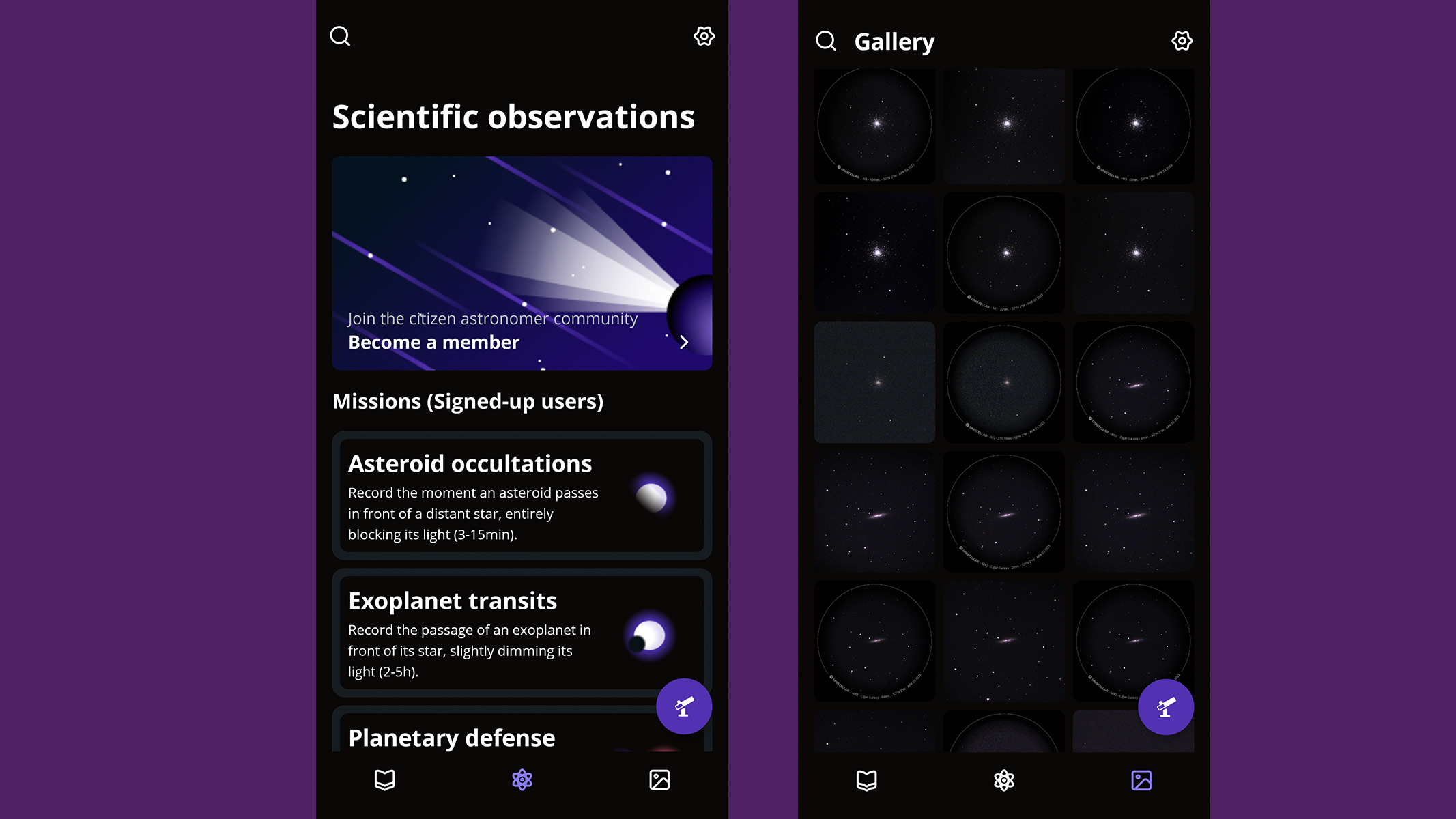
Specifications
Reasons to buy
Reasons to avoid
✅ You want a telescope you can grow with: This scope is good for all experience levels, so you won't need to upgrade.
✅ You live in a town or city: It has a Smart Light Pollution Reduction feature, ideal for users who don't live near a dark sky site and want to use it in their backyard.
✅ You want to do long nights of stargazing: It has the longest battery life on this list at 11 hours.
❌ You want excellent moon views: Although we were impressed by the views of galaxies and deep space, we thought the lunar views were lacking.
❌ You're on a budget: You're unlikely to find a budget-friendly smart telescope and this one definitely isn't the cheapest.
🔎 Unistellar eQuinox 2: An easy-to-use motorized smart telescope that can locate night sky objects with the press of a button, it can have you exploring the stars in minutes with no prior knowledge. ★★★★½
Like most smart telescopes, the Unistellar Equinox 2 has an incredibly sleek and stylish design. It's almost identical to its predecessor, the Equinox. The simple design with a single button on the telescope itself makes this scope very easy to use, a dream for beginners who might not have any experience with telescopes.
In our Unistellar eQuinox 2 review, we noted that the app is well laid out, really fast and intuitive to use. It is divided into three distinct sections, allowing you to switch between telescope operation, engage with the astronomy community and monitor/change settings.
Overall, this telescope performs extremely well, making it easy to move around and search for different things in the night sky. One great feature is the Smart Light Pollution Reduction, perfect for people in cities and urban areas who want to stargaze in their back yard. We were blown away by the images it produced: We observed breathtaking galaxies like M51 (the Whirlpool Galaxy), M82 (the Cigar Galaxy), and several star clusters. However, we weren't too impressed with the lunar views, which seemed lacklustre in comparison.
If you plan to take the Unistellar eQuinox 2 out and about, we'd highly recommend buying the dedicated backpack, as it's a bit of a struggle to carry otherwise. Our only other quibble is that it doesn't orientate until it's already dark, so if you like to get set up in advance before the sun sets, you might have to rethink your schedule. In the winter months, however, and when you're in areas with a very dark sky, the eQuinox 2's GoTo function works wonderfully.
- Read our full Unistellar eQuinox 2 review
Attributes | Notes |
|---|---|
Design | Slim, sleek, neat package. |
Performance | Impressive view of galaxies and nebulas. |
Functionality | Doesn't orientate until well after twilight, easy once oriented. |
Best for larger budgets


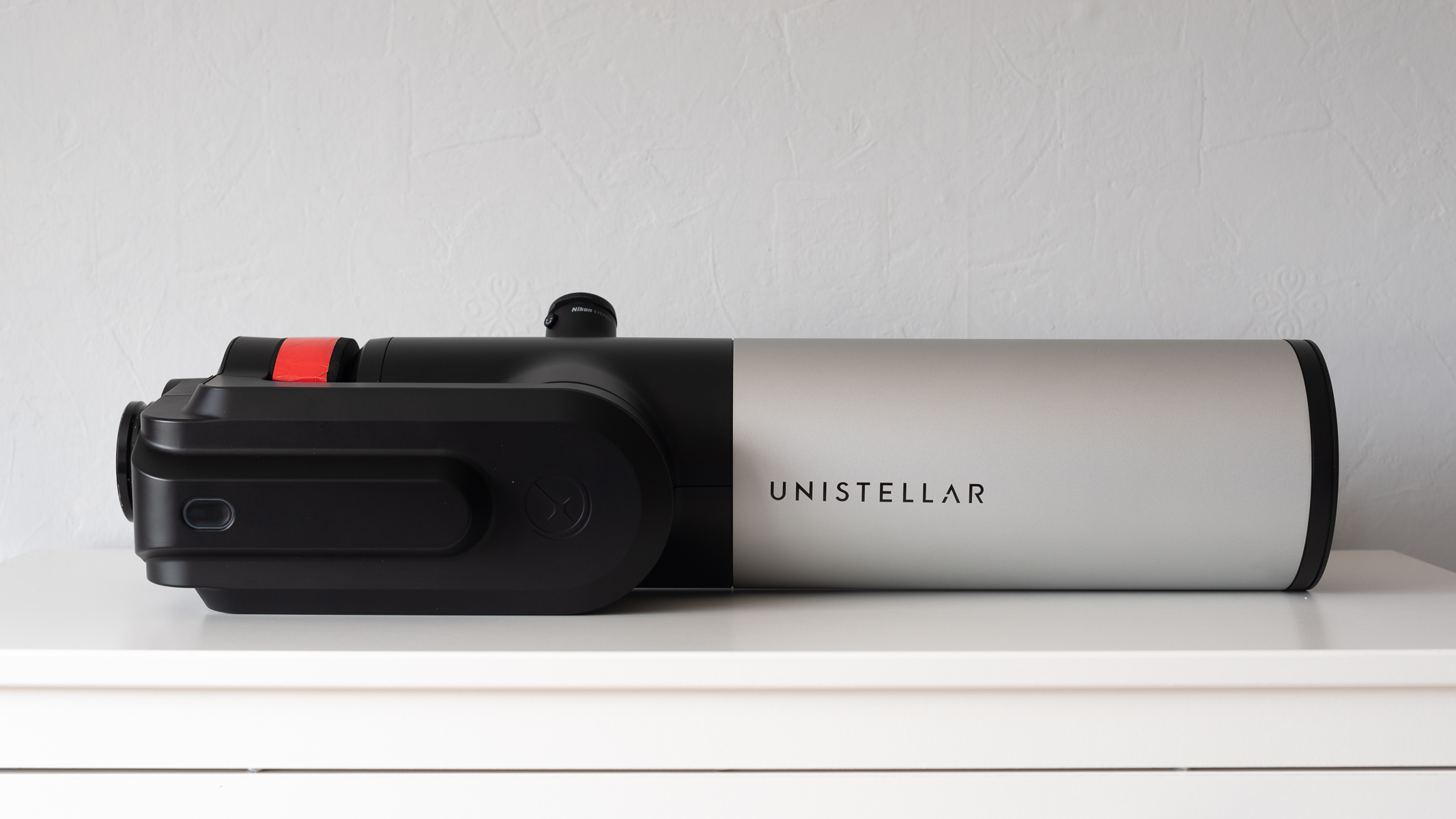
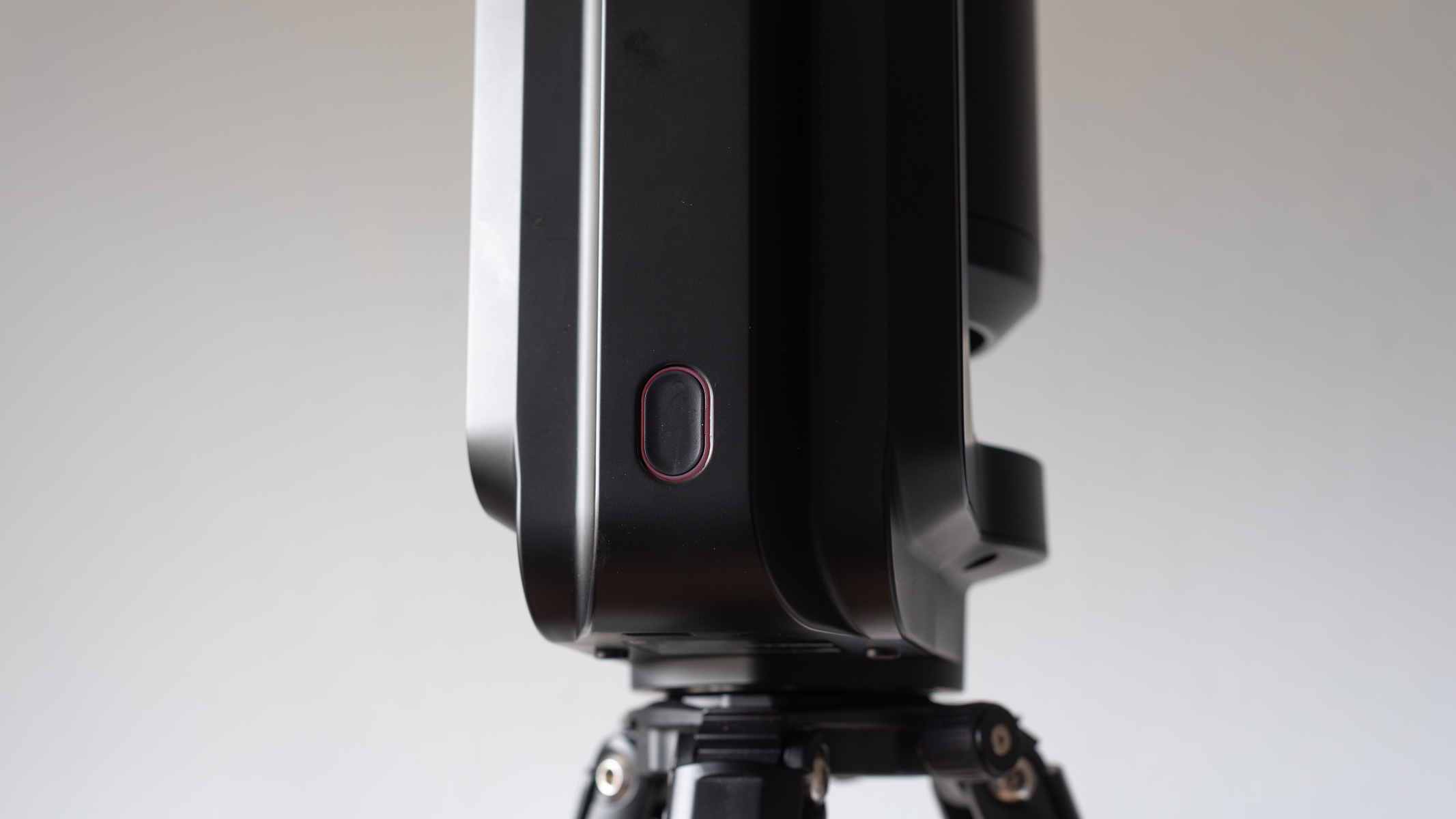
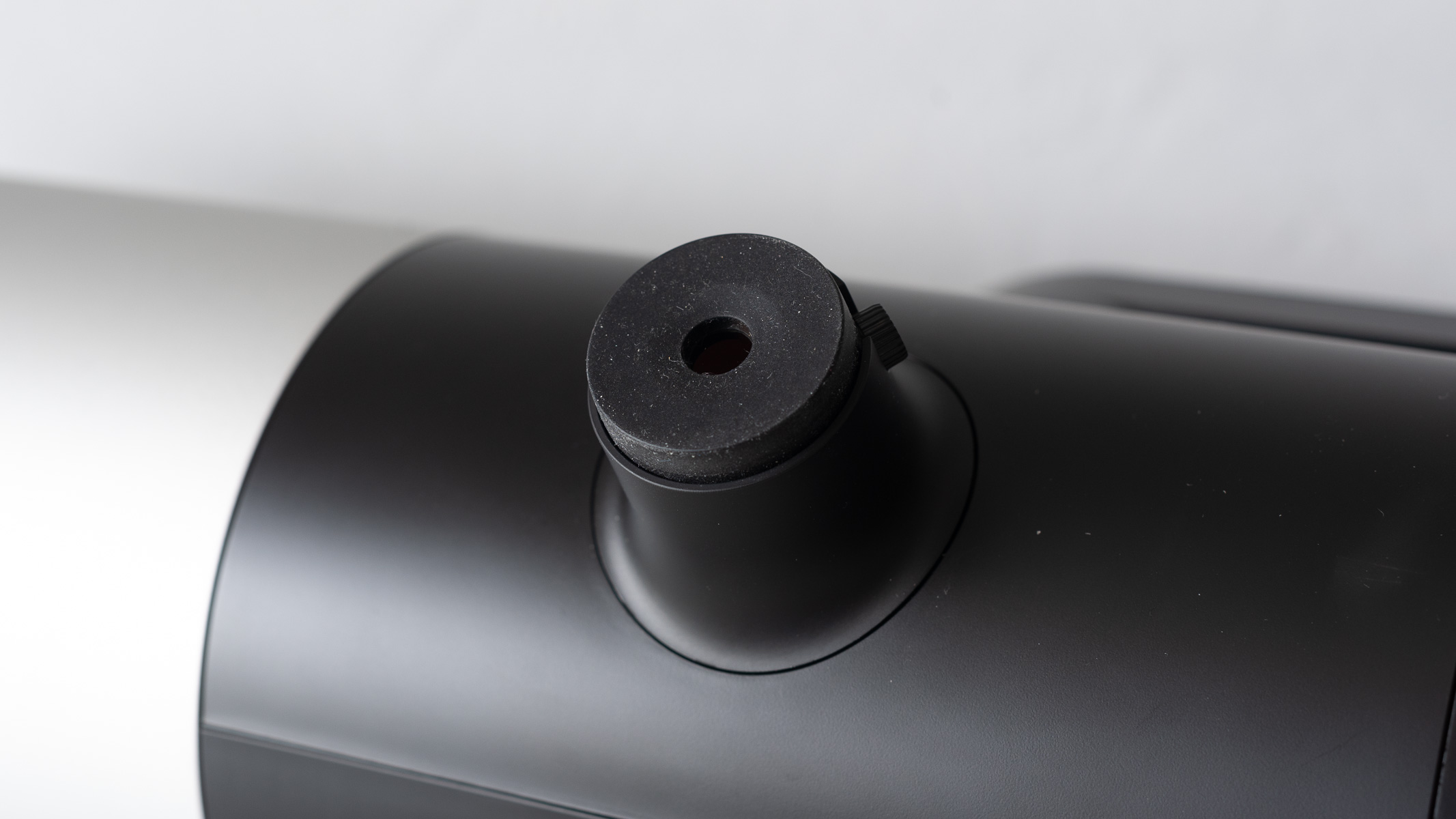

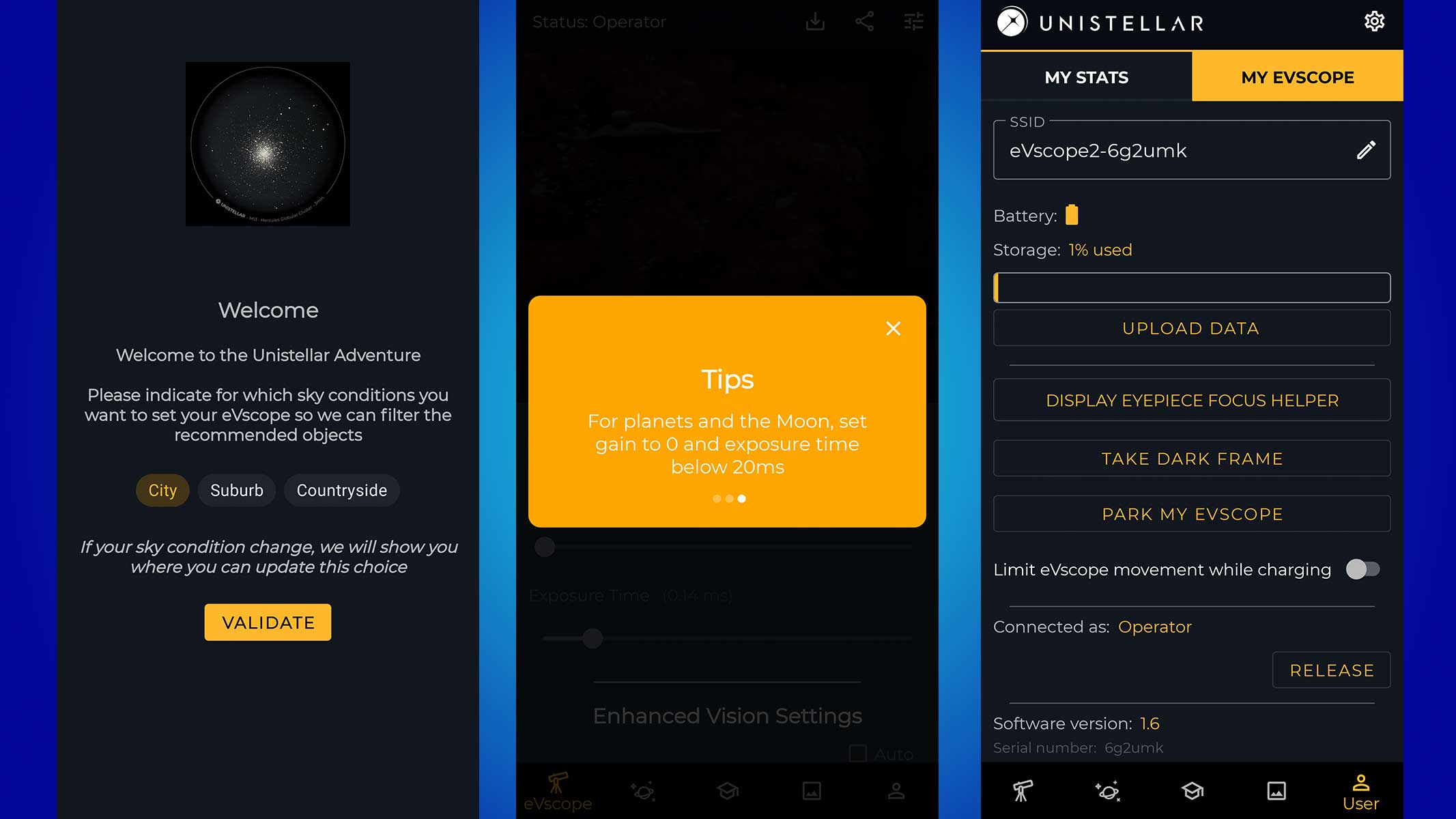
Specifications
Reasons to buy
Reasons to avoid
✅ You focus on astrophotography: For users who want to capture stunning images of the night sky, this is the scope to go for.
✅ You favor ease of use: This scope is incredibly simple to use, perfect for those who don't want to spend ages finding celestial objects themselves.
❌ You don't have a large budget: This scope is on the higher end of the spectrum when it comes to cost, so users who don't have a big budget may want to consider other options.
❌ You're not fussed about astrophotography: If you aren't bothered about capturing detailed astrophotos, there are more suitable options out there that cost a lot less.
🔎 Unistellar eVscope 2: A fantastically designed telescope, brilliant for photographers who want to get into astronomy and have the budget or astronomers who want an all-in-one system that’s simple to use and set up. ★★★★½
The Unistellar eVscope 2 is a beautifully designed telescope with a minimalist feel and solid quality all around.
As we noted in our Unistellar eVscope 2 telescope review, it's easy to tell that every aspect of the telescope has been carefully designed. The Nikon eyepiece is comfortable to use and gives it more of a traditional feel, although the soft rubber surrounding does tend to trap dust and fibers.
If it wasn't for the eVscope 2's eye-watering price tag — $5,000 — we'd recommend it as one of the best smart telescopes for beginners. In theory, it absolutely is thanks to its easy set up and intuitive controls, but very few astronomy beginners will have such a large budget to spend. If you do? Look no further.
One thing to note is that this telescope is solely operated through an app, so with just a tap of your phone screen. Since you'll need to rely on your phone for Unistellar's compatible app, make sure you come prepared with a fully-charged battery, or bring one of the best power banks out with you.
Although the image can sometimes lag, the Explore mode is really helpful for astronomers of any skill level. It accurately shows you all the objects visible in the night sky based on the date and time you're using it, which greatly reduces the guesswork.
The 7.7MP camera isn't as good as a regular telescope with an eyepiece, but it's definitely on par with if not even better than many specialized astrocams on the market. We think it's as close to perfect as you can get right now for beginner astrophotographers.
Overall, there's no denying that the $5,000 price tag will make it inaccessible to many users. But when you think about the technology it packs, it's akin to one of the best mirrorless cameras on the market, so we think it's worth the money if you can afford it.
- Read our full Unistellar eVscope 2 telescope review
Attributes | Notes |
|---|---|
Design | Incredibly stunning looks and solid telescope construction. |
Performance | Object go-to is intuitive and fast. |
Functionality | App allows you to easily go-to celestial objects. |
Best for resolution
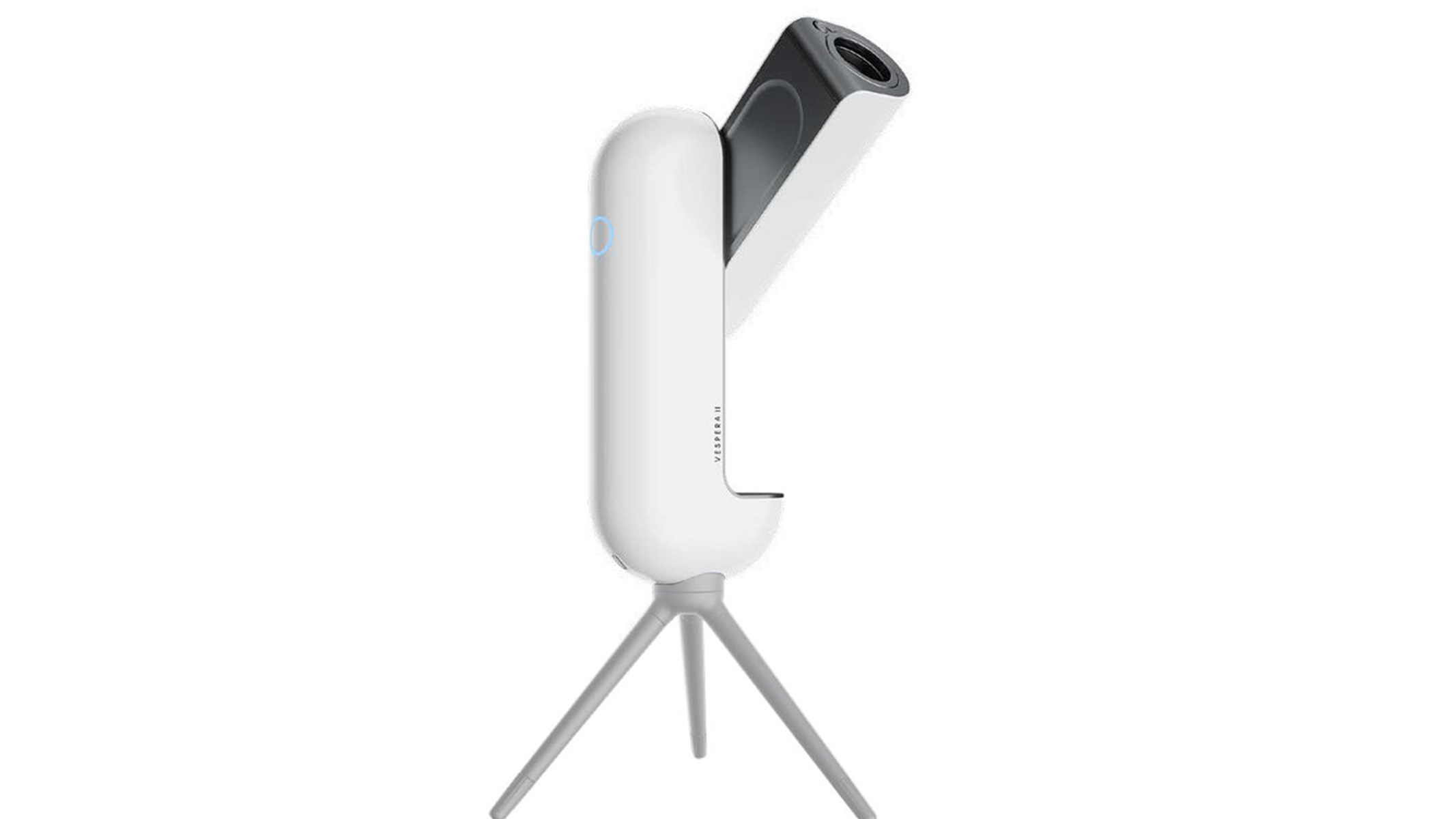
Specifications
Reasons to buy
Reasons to avoid
✅ You want detailed images: The 8.3MP sensor produces amazing images, with the ability to boost it to 24MP with Vaonis' Live Mosaic Capture.
✅ You want to travel with it: While slightly heavier than the original Vespera, the Vespera II is still incredibly portable.
❌ You want to see planets: The Vespera II is best suited for nebulas and deep space viewing.
❌ You want to do long sessions: The battery life has decreased to 4 hours, so it won't suit long stargazing sessions unless you have a power bank.
Vaonis Vespera II: An incredible smart telescope that is inexpensive, beginner-friendly and produces amazing images of nebulas. We were very impressed, although the short battery life is disappointing. ★★★★★
We liked the original Vespera, but our main complaint was the underwhelming 2MP images it produced, lacking clarity and detail. Thankfully, with the release of the Vespera II, Vaonis has boosted the megapixel count by over four times: It's now capable of taking 8.3MP images, the highest of any smart telescope on this list. Better yet, Vaonis' patented Live Mosaic Capture can boost the resolution up to a massive 24MP.
The Vespera II features live autofocus and image enhancement which automatically gets rid of bad images and uses image-stacking to enhance clarity in real-time. Extra-low dispersion glass is used to ensure fantastic image quality across the field of view, and the telescope saves images as RAW files which you can edit in one of the best photo editing apps. It produces fantastic images of nebulas with incredible detail and clarity, although it isn't any good for planetary viewing.
We were seriously impressed when we reviewed the Vaonis Vespera II. We awarded it massive 5 stars, saying that it's "...one of the best smart telescopes you can buy, despite it being one of the cheapest in its class. "
It does have one drawback, however, which is its short battery life. It's super portable and easy to carry around, so it's a shame that the battery only lasts for 4 hours, especially when you compare it to the original Vespera which had an 8-hour battery life. Technically, you can take it out to remote dark sky spots thanks to its portability, but you'll only have 4 hours of use (without a power bank) once you're there. Plus, it doesn't include a tripod, so you'll have to spend extra money on top of the $1,590 price tag, which is disappointing. Other than that, it's a great all-in-one kit that's good to go right out of the box.
- Read our full Vaonis Vespera II review
Attributes | Notes |
|---|---|
Design | Portable and fairly lightweight, although it doesn't come with a tripod. |
Performance | Produces amazing images of nebulas, but isn't good for viewing planets. |
Functionality | Battery life has decreased to 4 hours. |
Best for versatility
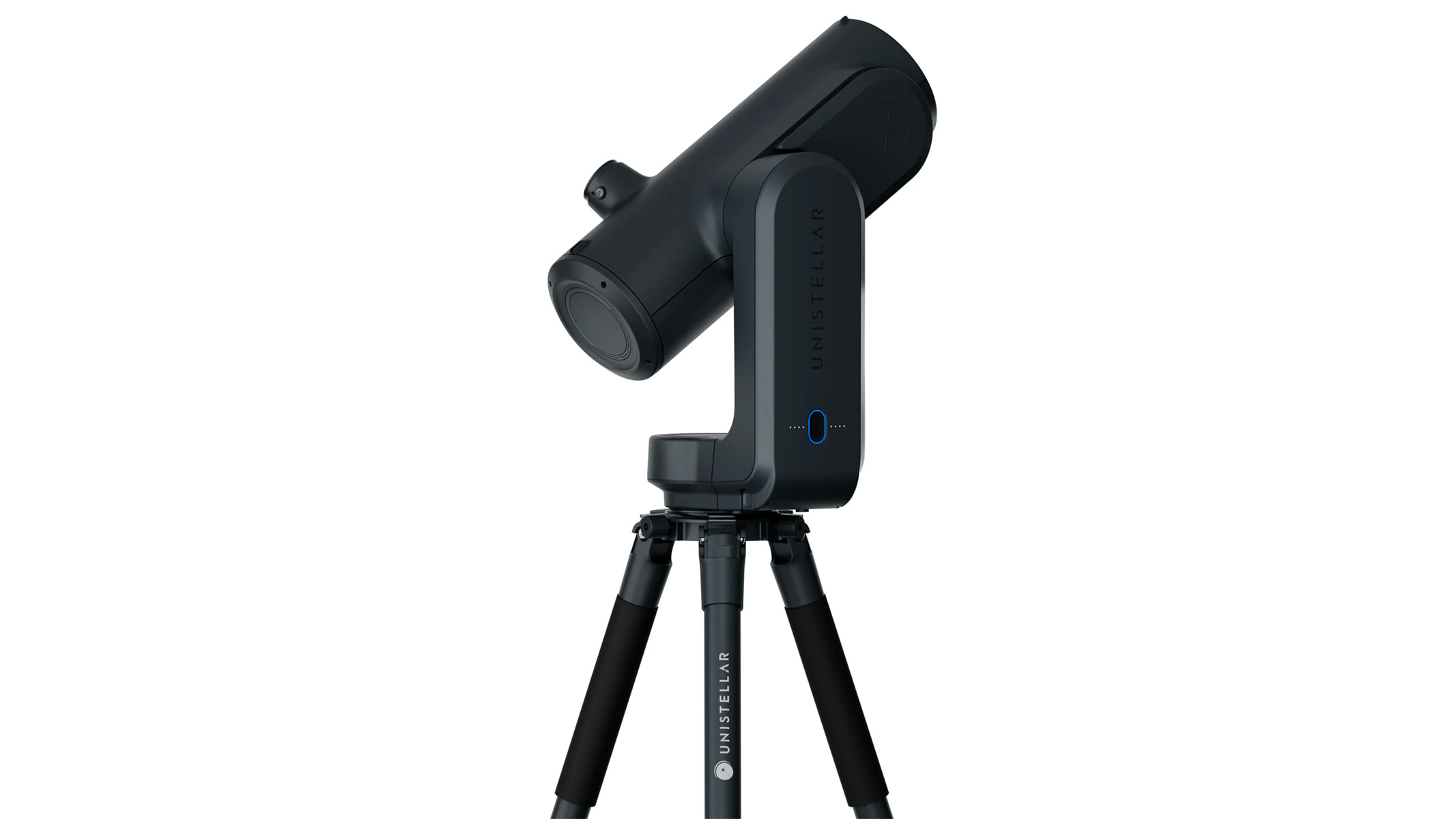
Specifications
Reasons to buy
Reasons to avoid
✅ You're into astrophotography: This scope can view the moon, planets and deep space, making it a great all-rounder for astrophotography.
✅ You want to travel with it: It's substantially lighter than the other models in the Unistellar range, so it's great for taking to remote dark sky sites.
❌ You're on a budget: Although it's not a scope you'd need to replace any time soon, not everyone's budget stretches to $3,999.
❌ You want super detailed images: If high resolution is what you're after, the Equinox 2 or eVscope 2 would be a better option.
🔎 Unistellar Odyssey Pro: An ideal blend of portability with stunning optical views, the Odyssey Pro is great for viewing all types of celestial objects and is light enough to take on stargazing trips with you. ★★★★½
If you've been reading this guide and wishing there was a telescope combining the optical prowess of Unistellar scopes with the portability of the Vespera, then you're in luck. The Odyssey Pro is the newest offering from Unistellar, and it hits that sweet spot.
While it doesn't quite match the resolution of the Equinox 2 or the eVscope 2, the Odyssey Pro stands out for its portability. Weighing just 14.3 lbs (6.5kg) for the complete kit, it's noticeably lighter and easier to handle than these two scopes, which weigh 19.8 lbs (9kg) each. This makes it a better choice if you want to take it along with you to remote dark sky locations.
One thing to note is that the Odyssey Pro has a shorter battery life compared to the other Unistellar telescopes in this guide. It'll last around five hours after a full charge, so if you're planning a long night of stargazing, you'll want to pack a power bank into your kit.
In our Unistellar Odyssey Pro review, we noted its smaller form factor which makes for easier portability during travelling. This aligned with what we thought about the model prior to testing. Whilst able to deliver quiet operation and stunning images of nebulas and star clusters, we found that it was still rather poor at planetary imaging. It is a lighter model than the eQuinox 2 and the eVscope 2, whilst also being a more beginner model with complete autofocus and no need for mirror alignment.
- Read our full Unistellar Odyssey Pro review
Attributes | Notes |
|---|---|
Design | Sleek black finish, more lightweight than the other Unistellar models. |
Performance | Very good for viewing planets and excellent for deep space. |
Functionality | 5 hours battery life is decent, but not as long as the other Unistellar models. |
Best for portability


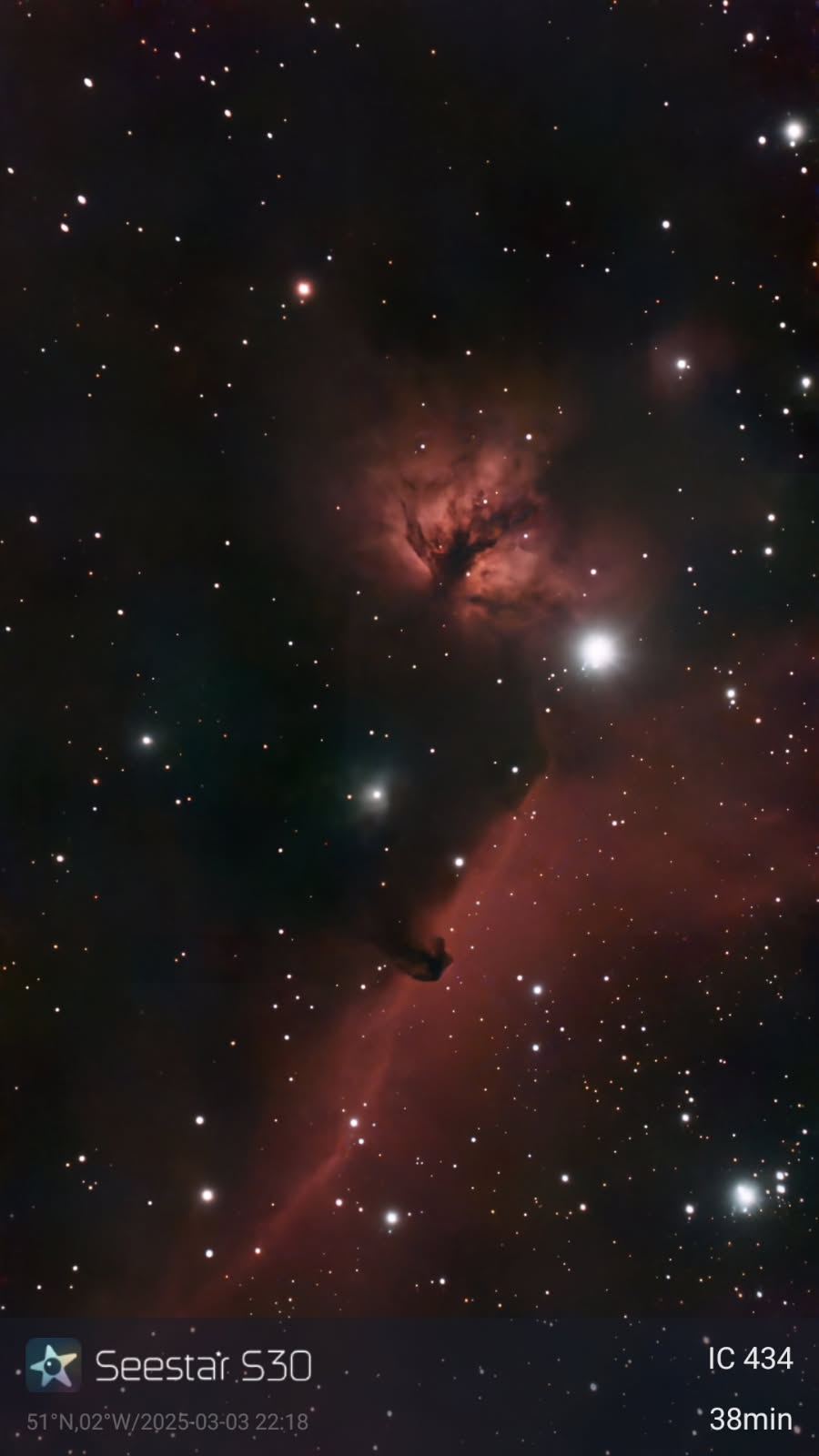
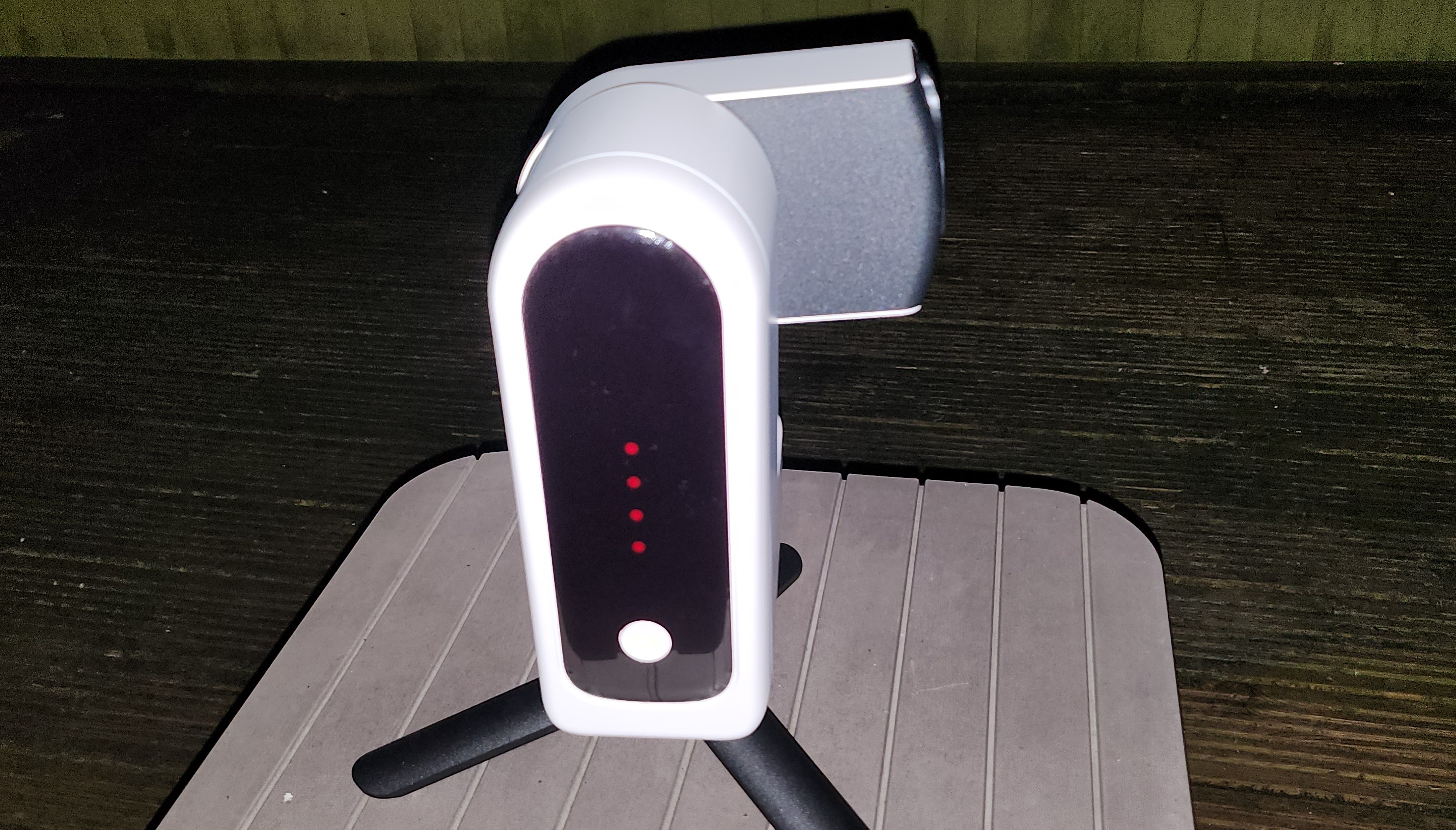
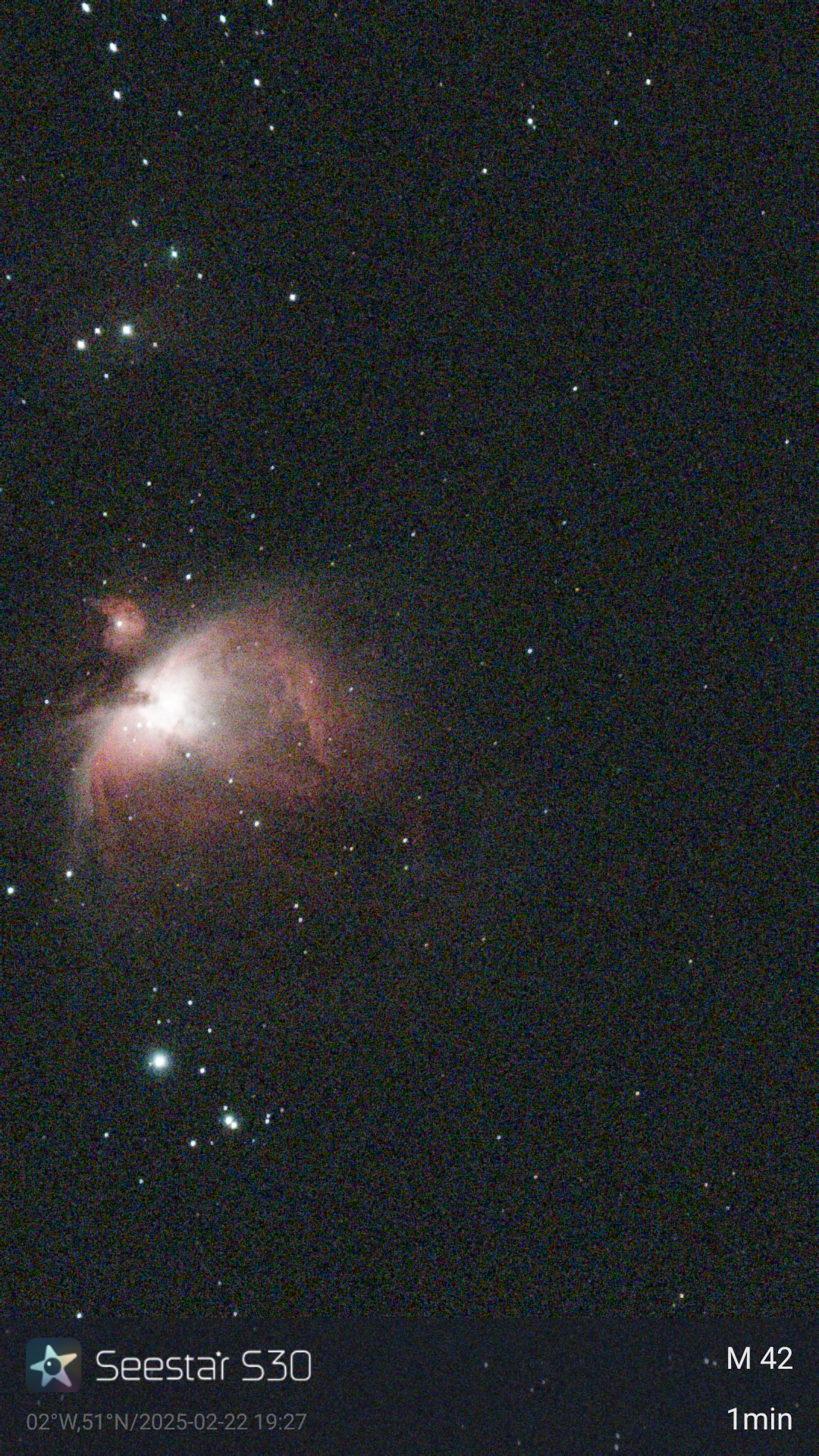
Specifications
Reasons to buy
Reasons to avoid
✅ You want easy portability: There's no faff in setting this telescope up to start stargazing and its compact design means you can take it anywhere.
✅ You want a telescope that's family-friendly: Anyone of any age or experience can get stargazing with this telescope.
❌ You want specificity: Occasionally, the Seestar S30 struggles to find night sky objects so for those wanting spot-on accuracy, you may want to look elsewhere.
❌ You want a detailed view: Due to its features, objects do sometimes appear small in the field, lacking lots of detail.
🔎 ZWO SeeStar S30 Lightweight, compact and no-faff with set up, the Seestar S30 is an ideal smart portable telescope for all the family to use ★★★★
The Seestar S30 is a lightweight portable smart telescope that allows you to get stargazing in minutes. Weighing only 1.65 kg, you really can take this smart telescope anywhere with you whether that's a friend's garden or out into the sticks to a dark sky site. Being a smart telescope also means it's easy to use, allowing anyone of any age to start experiencing the night sky.
While the telescope itself is compact, the tripod it sits on is also small. And there's no need to be concerned about the lack of extendable legs on the tripod as you control this smart telescope via the accompanying smartphone app. You don't need to look through a viewfinder and crank your neck as you view the night sky objects via your phone screen. Plus, the alt-azimuth mount means the aperture arm can move in all directions so you won't miss any part of the night sky. We were impressed by how quiet the telescope was when searching for night sky objects.
In our review of the Seestar S30, our reviewer said, "it's so quiet that in the dark, we had to double-check that it had really moved as commanded." Our reviewer was also impressed with the speed in which it found objects, with the S30 taking between 10-20 seconds to locate the desired object. With this telescope being so lightweight, it's easy to move around from surface to surface and comes with its own carry case.
While the telescope was good at locating night sky objects and giving good views of them, some deep-sky objects did appear small in the field which was a little disappointing. However, this is to be expected from a telescope of this size.
- Read our full ZWO Seestar S30 review
Attributes | Notes |
|---|---|
Design | Quiet and compact |
Performance | Easy to set up and use with accurate 'Go-To' functionality |
Functionality | User-friendly app and easy to use |
Best budget
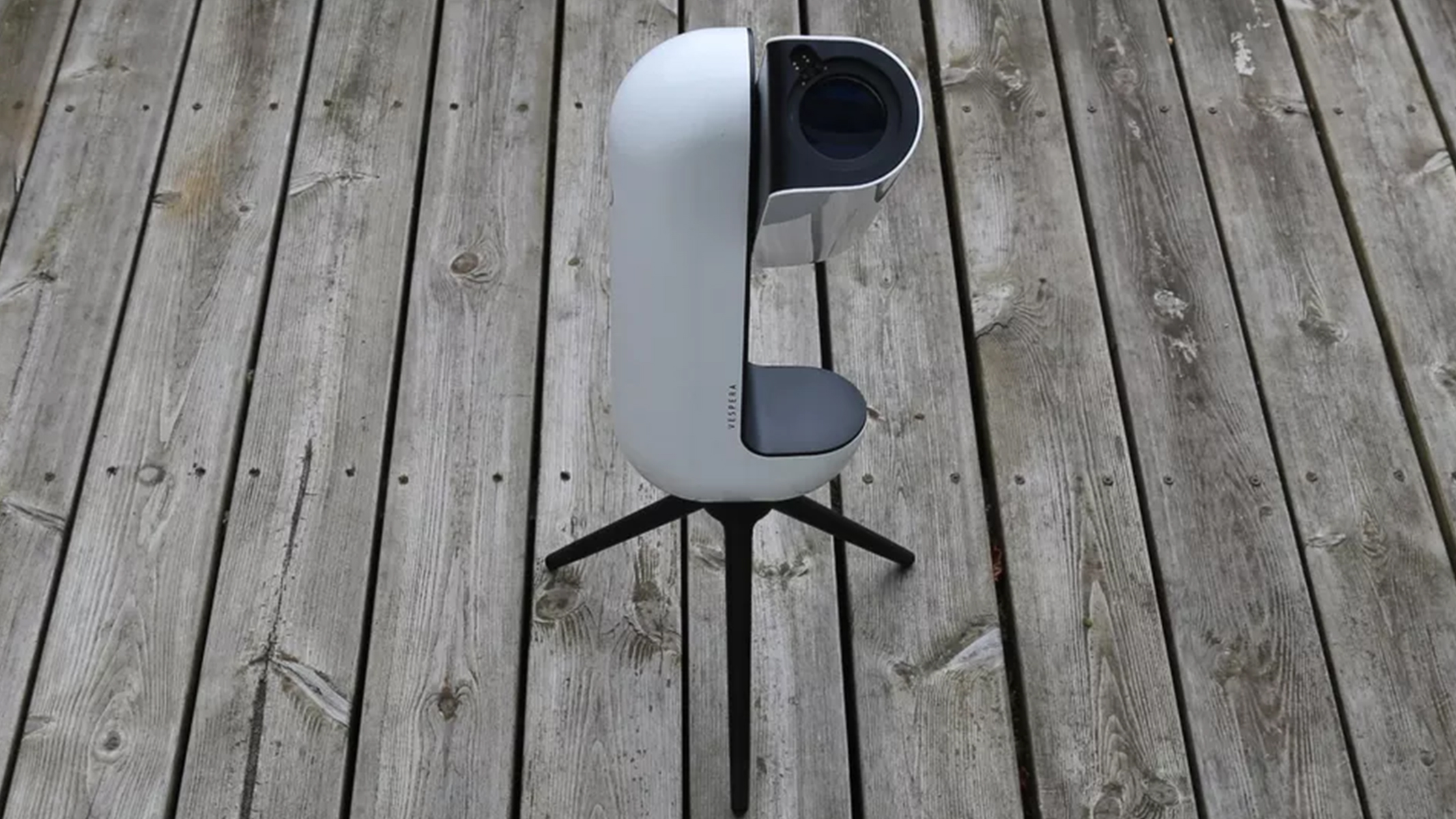


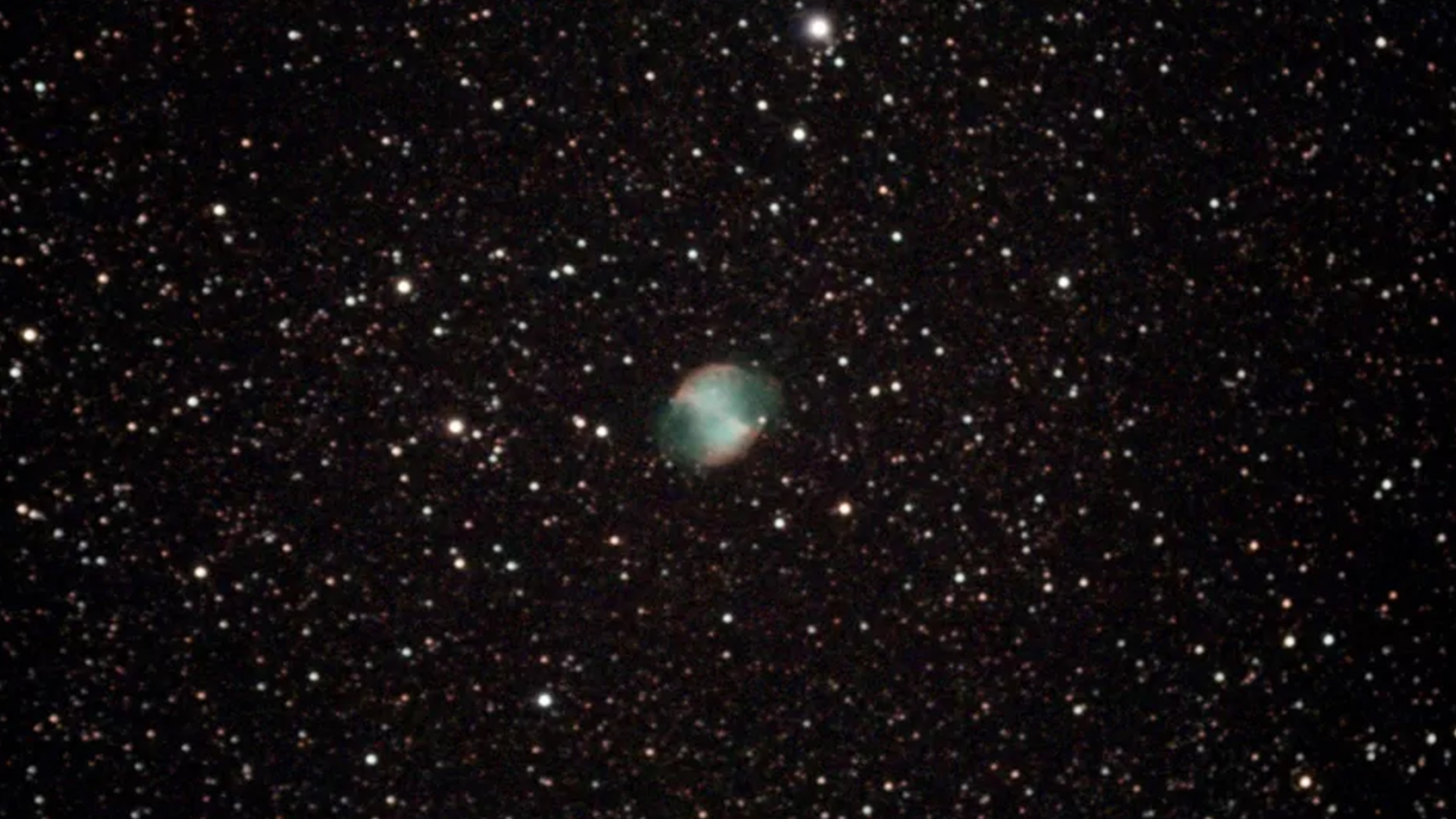
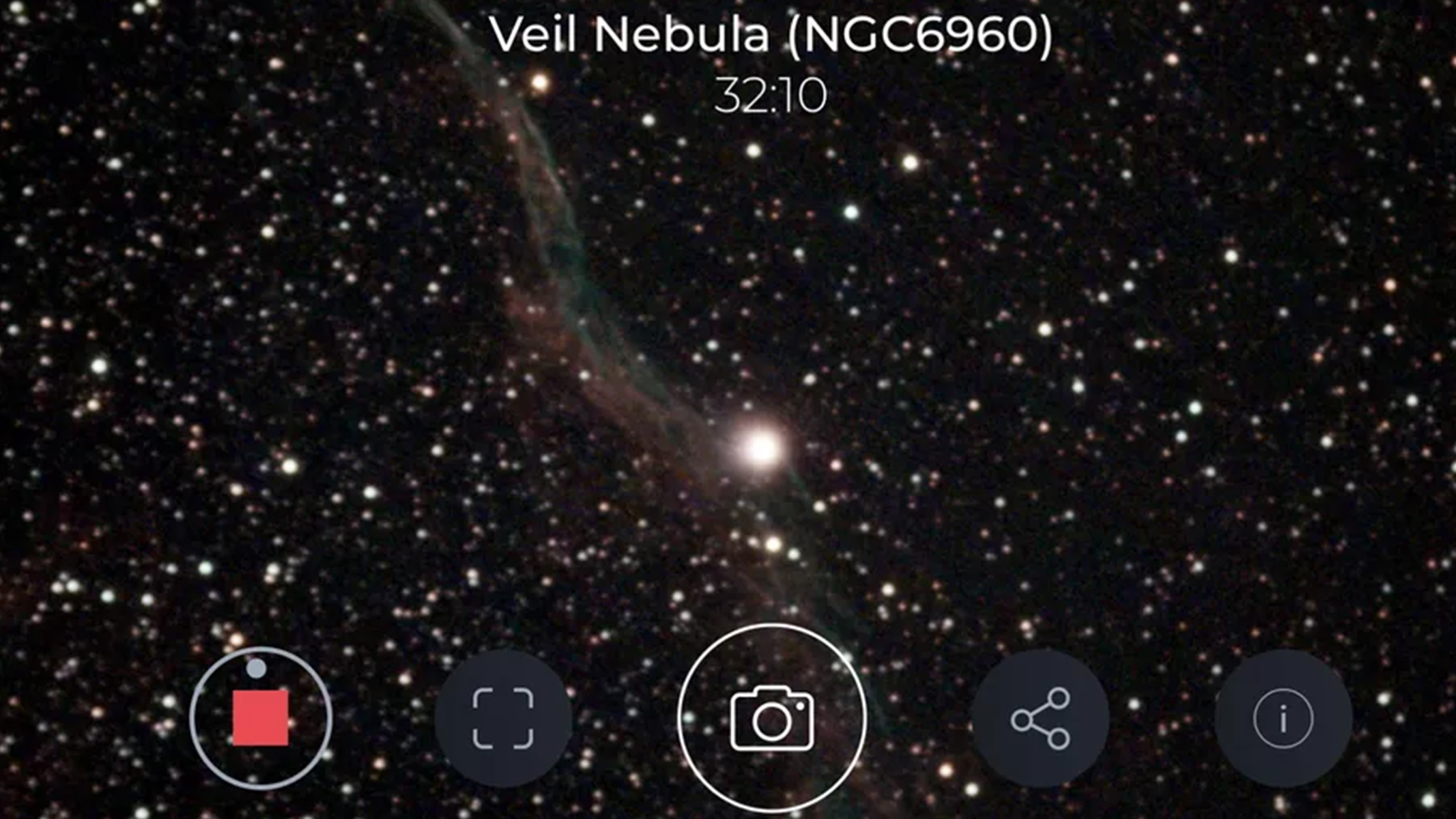
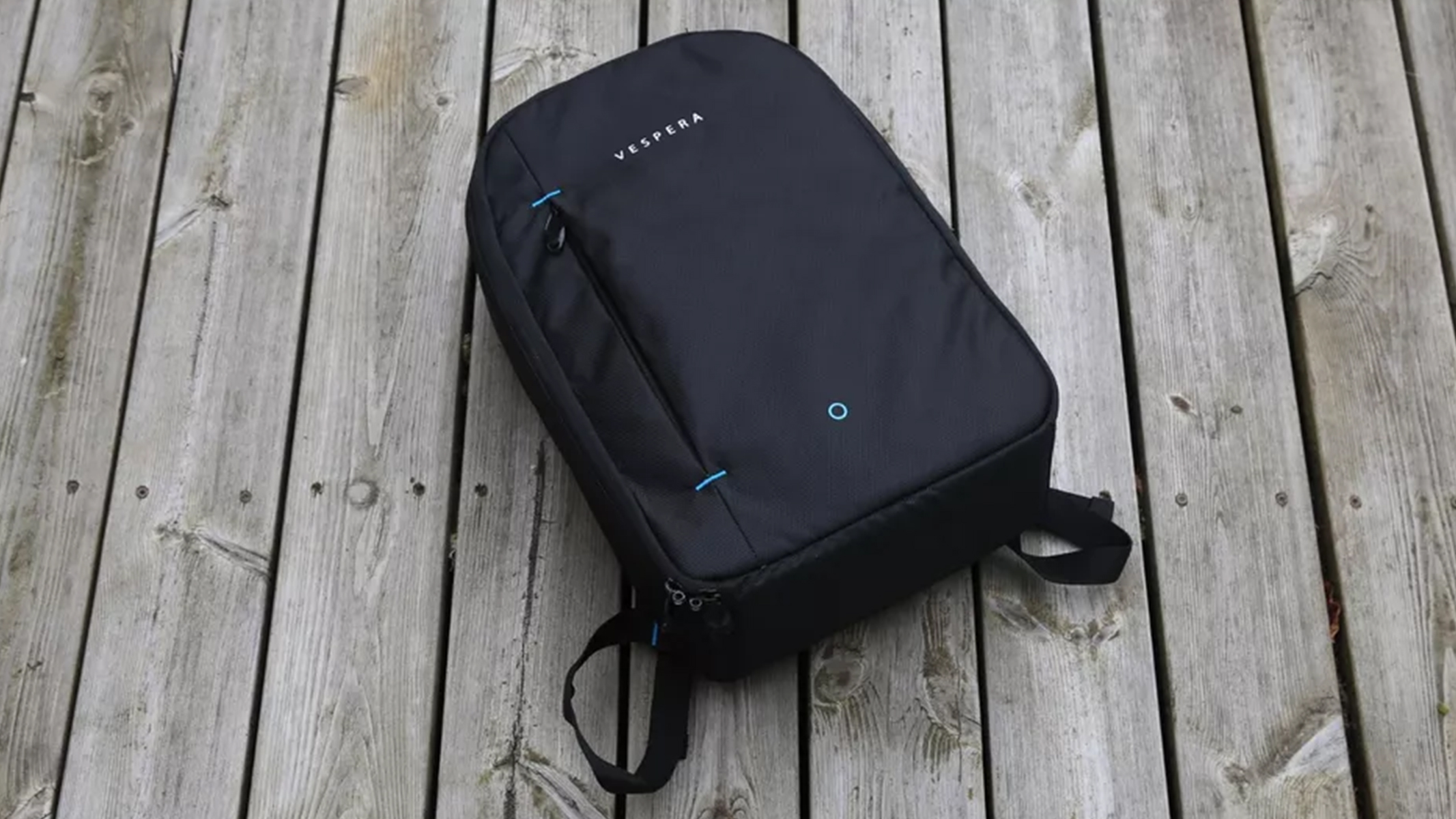
Specifications
Reasons to buy
Reasons to avoid
✅ You're on a budget: ...relatively speaking. Compared to traditional scopes it seems expensive, but it's the cheapest smart telescope on this list, so this is the one to get if you can't stretch your budget very far.
✅ You want something lightweight to travel with: It's also the lightest option on this list at just 11 lbs / 5kg, making it a great option to take to dark sky sites.
❌ You want to view the moon and planets: It's more suited to deep-sky viewing, so it's best to avoid it if you want lunar or planetary views.
❌ You want good quality images: While the images it captures are acceptable, they lack sharpness and resolution.
🔎 Vaonis Vespera Observation Station: An easy-to-use and futuristic-looking scope for beginners in light-polluted cities, the Vaonis Vespera Observation Station features impressive live image-stacking for galaxies and nebulas but it lacks resolution and can't image planets. ★★★★½
The Vaonis Vespera is one of the smallest smart telescopes on the market, standing at just 15 inches/40cm tall and weighing only 11lbs/5kg. It's a sleek-looking piece of equipment with a futuristic, curved design and a very minimal appearance.
We would definitely recommend the Vaonis Vespera for beginners thanks to its affordability, ease of use and user-friendly features. There's nothing much to see, physically speaking, aside from one button and a motorized arm.
In our full Vaonis Vespera review, we found putting it up and calibrating it incredibly easy. You just put it on the ground, unfold it and wait for it to calibrate itself. We thought it coped really well with light pollution, making it a great contender if you live in an urban area, although it's not the best choice for viewing planets or the moon.
Our main complaint was that the images it produces are low resolution: they're 2MP, or 1920x1080, which is pretty underwhelming. For beginners and those wanting to take casual images of the night sky, it's probably enough, but for astrophotographers and astronomers wanting to capture detailed, technical images of the night sky, you'll want to look for a smart telescope with a higher pixel count.
We are currently reviewing the newer Vespera II — it has more megapixels and is only marginally more expensive than the original Vespera, so keep your eyes peeled for that.
- Read our full Vaonis Vespera review
Attributes | Notes |
|---|---|
Design | Futuristic curvy design. |
Performance | Copes well with light pollution but can't observe planets. |
Functionality | Easy to set-up. |
Best for light pollution
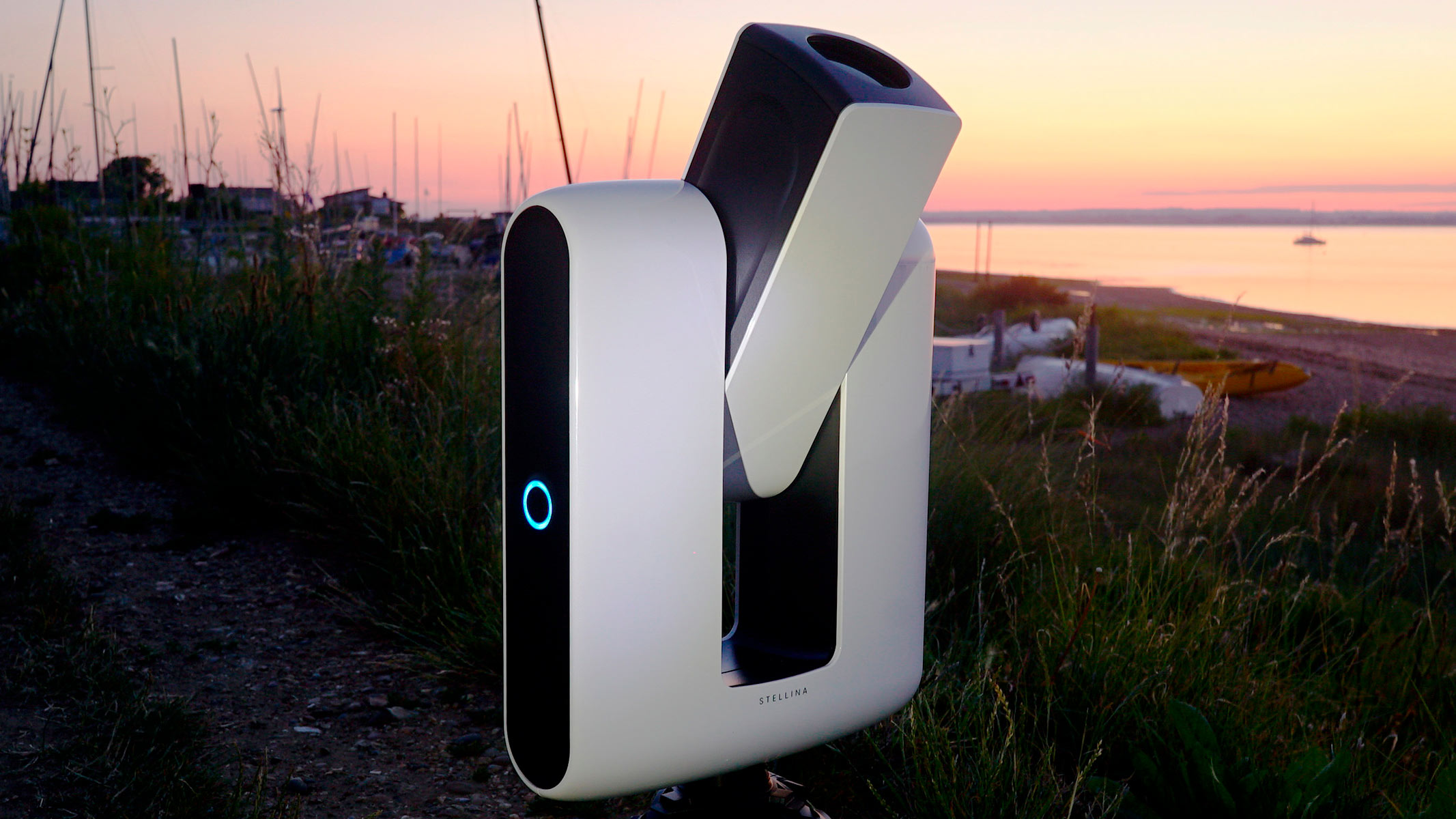
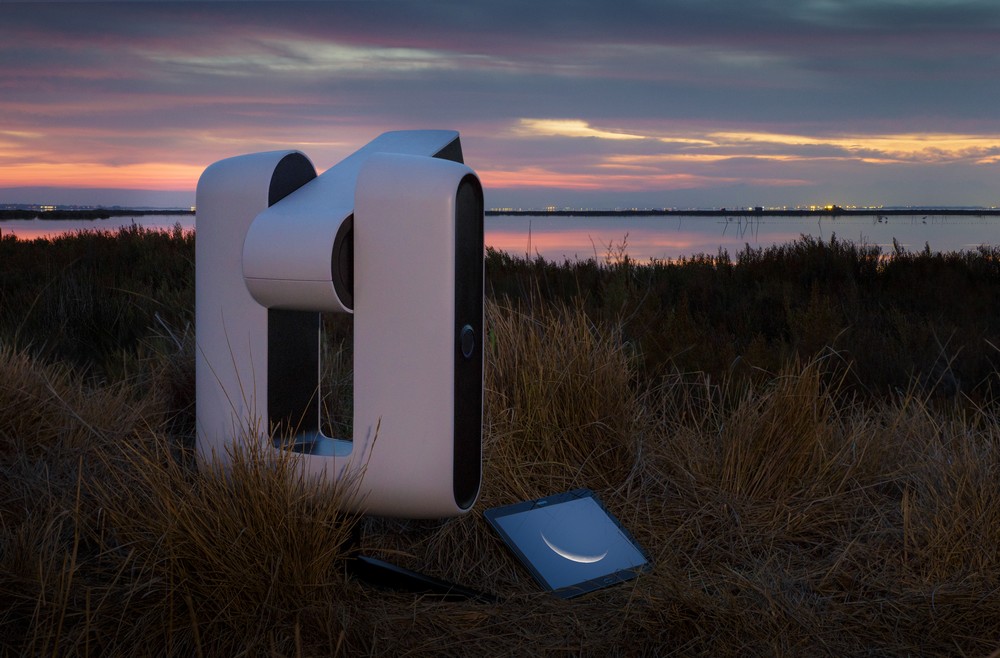


Specifications
Reasons to buy
Reasons to avoid
✅ You live in an urban area: It has impressive CLS (City Light Suppression), eliminating light pollution from cities and towns.
✅ You want good images: Its 6.2MP camera is the second-best on this list, and we found the images impressive even in unfavorable conditions.
❌ You want something lightweight: It's the heaviest option on this list.
❌ You want to photograph planets: It's not ideal for planetary viewing, so check out one of the smart scopes from Unistellar.
❌ You're a beginner: While it's easy enough to use once you get the hang of it, there are a few aspects that could trip beginners up.
🔎 Vaonis Stellina: Easy to control it provides delightful images directly to your phone or tablet within minutes. Once you have mastered the setup process, it trades versatility for ease of use. ★★★★
The Vaonis Stellina is the Vespera's older sister, featuring more megapixels and magnification. On the flipside, it's also heavier and more expensive.
As we noted in our Vaonis Stellina review, it does have a couple of small design niggles, but none of them are dealbreakers. Overall, we thought it was sleek, compact and robust.
While it's quite easy to carry with the backpack, it's important to note that the Vaonis Stellina is the heaviest smart telescope in this lineup, weighing in at 24.25 lbs /11kg. As a result, we'd recommend this scope if if you live in a city and intend on stargazing from your backyard, as its CLS (City Light Suppression) effectively removes any traces of light pollution from the images. We found that the stars and nebulas were accurately represented, although the star quality wasn't as sharp as we hoped.
One complaint we found with the Stellina, however, is that its instructions are rather poor (actually, they're practically non-existent). If you're not well-versed in smart telescopes, its set-up and functionality might well leave you scratching your head. Thankfully, it's fairly straightforward to understand, but a simple quick set-up guide included in the box could make a world of difference.
What's neat is that once the Stellina is set up, you can leave it outside doing its thing while you go indoors in the warmth. Thanks to its app functionality, you can keep viewing the results from your phone while choosing new targets to capture. The only caveat is you need to be within 10 yards of it, but if you're using it in your own backyard, that shouldn't be a problem.
- Read our full Vaonis Stellina review
Attributes | Notes |
|---|---|
Design | Suitcase shaped, rather heavy |
Performance | CLS leaves no trace of light pollution. |
Functionality | Poor instructions could be tricky for beginners. |
Best for deep sky images
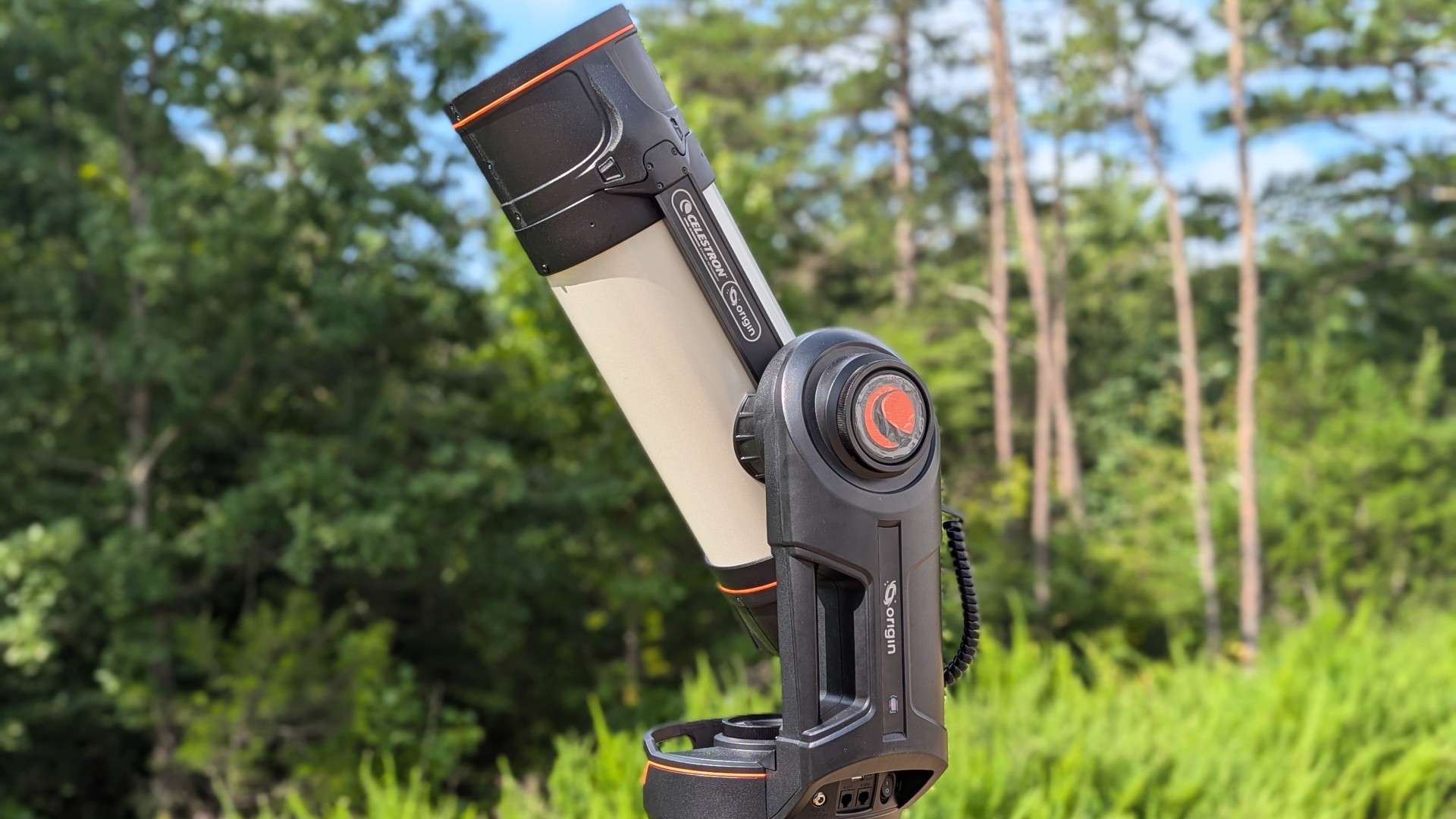
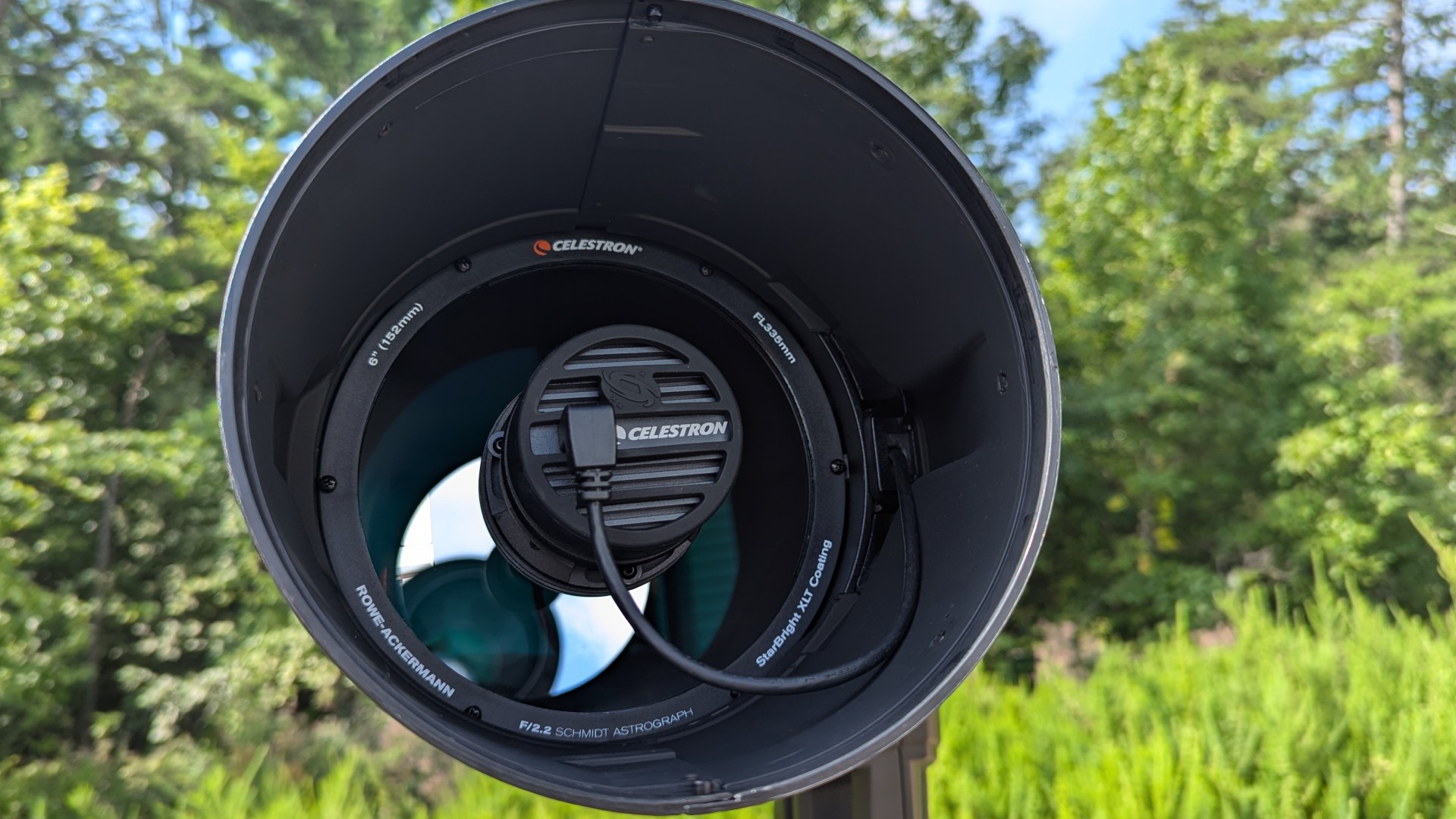
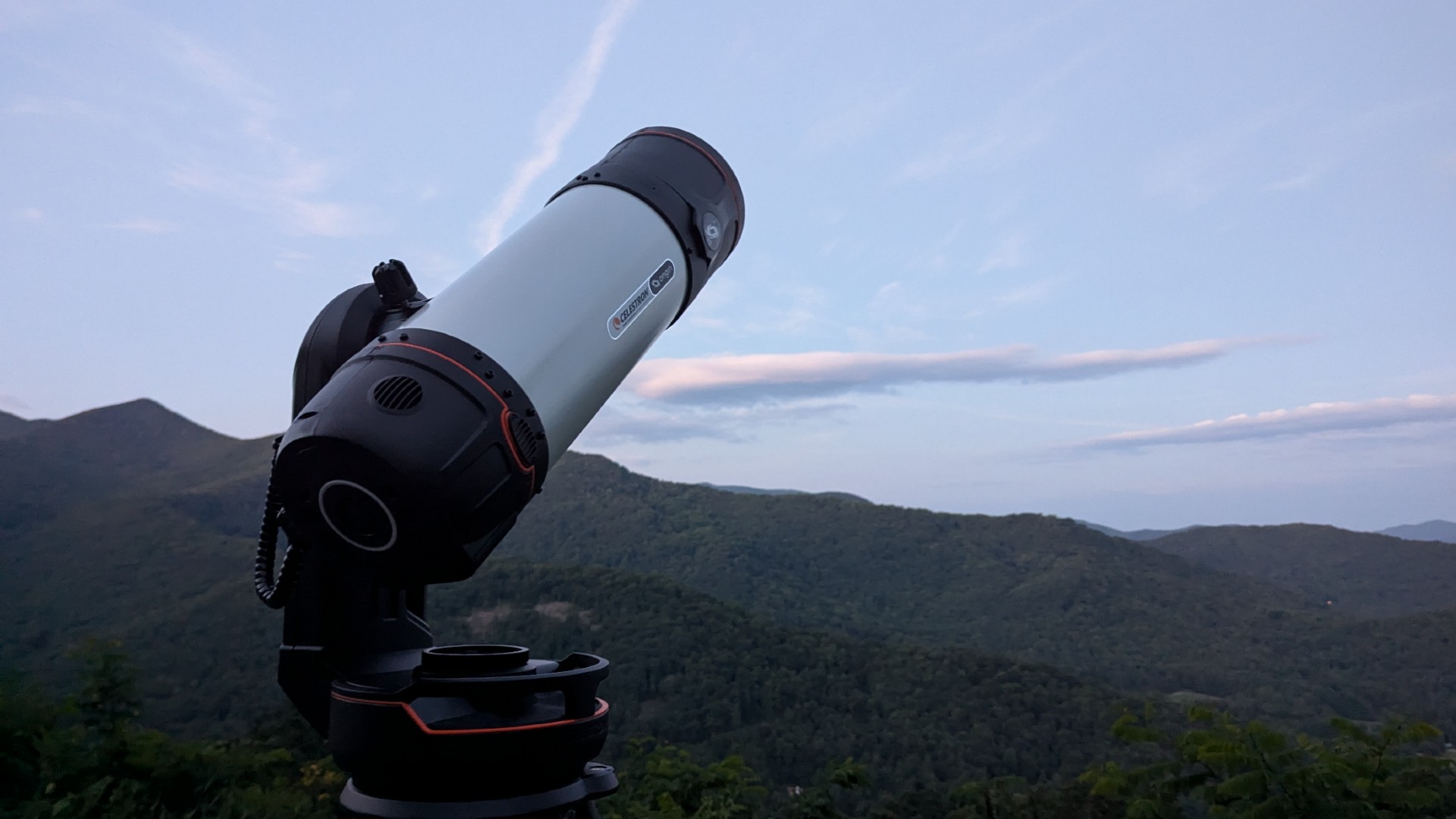
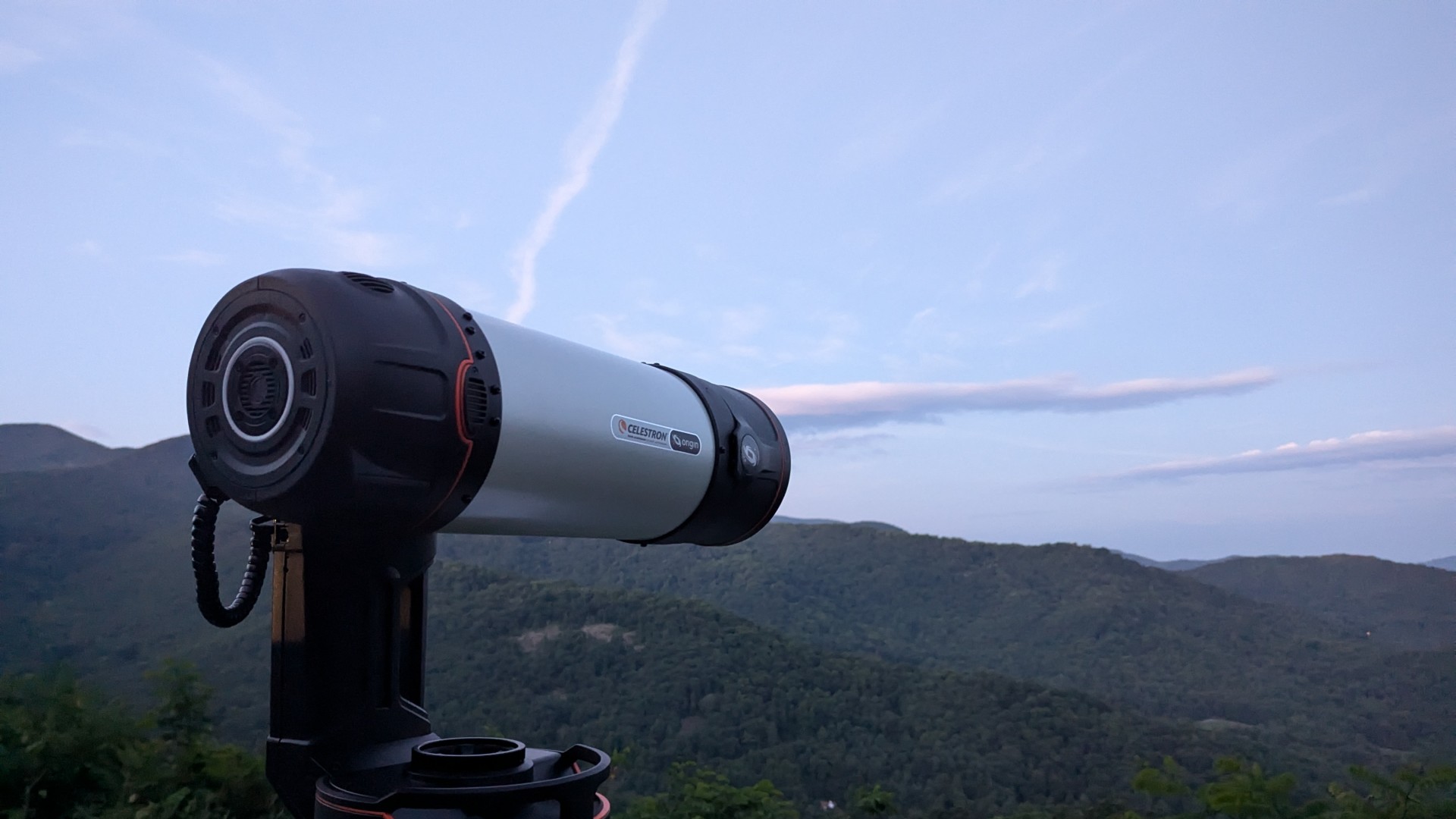
Specifications
Reasons to buy
Reasons to avoid
✅ You like automation: Focusing, tracking and choosing targets are all automated
✅ You want to take the hassle out of deep sky imaging: The Origin does it all in one easy-to-use unit that sets up in minutes.
❌ You like customization: There are very few features or controls to tweak on the Origin.
❌ You prefer traditional telescopes: These telescopes do not have an eyepiece and give a mobile-device-only view of the night sky.
🔎 Celestron Origin: You'll be set up to go within a matter of minutes, and able to capture gorgeous images of the deep sky. It's definitely geared more towards imagery than general astronomy, however. ★★★★½
Perhaps our favorite thing about the Celestron Origin Intelligent Home Observatory is just how easy it is to set up. Within minutes of getting it out of the box you'll be taking gorgeous images of the night sky. This impressive piece of equipment does everything for you, and short of connecting it to your smartphone, there's little else you need to do.
That might be a downfall for some people though: If you're looking for a more traditional experience you won't find it here. There's no eyepiece — you can only view the images it produces on the screen of your connected device. That makes it more of an astrophotography tool than a telescope in the traditional sense, and if you're wanting to do more general stargazing, then you might find it not quite fit for purpose.
As a deep sky image tool, though, you'll be seriously impressed with what the Celestron Origin is capable of. It can capture crystal-clear photos, even from urban, light-polluted areas, making this a great choice for astrophotographers living in the city. It's even capable of streaming to multiple devices at once, so if you're stargazing as a group or as a family, it's a great option.
The functionality of the Celestron Origin doesn't come cheap though: at around $4,000, it's a tool that only the most serious astronomers and astrophotographers are going to be able to afford. But as we said in our Celestron Origin review, it's worth every penny if you want to image distant galaxies — it simply can't be beat.
- Read our full Celestron Origin review
Attributes | Notes |
|---|---|
Design | Resembles a classic Celestron tube, although it's very heavy. |
Performance | No-fuss stacking and processing |
Functionality | Very easy to use, although lack of manual controls can be frustrating. |
Best smart telescopes: Comparison
Product | Rating | Image resolution | Focal length | Aperture | Optical design | Focal ratio | Battery life | Weight |
|---|---|---|---|---|---|---|---|---|
Unistellar eQuinox 2 | ★★★★½ | 6.2MP | 450mm | 4.5 inches | Newtonian Reflector | f/4 | 11 hours | 19.8lbs |
Unistellar eVscope 2 | ★★★★½ | 6.2MP | 450mm | 4.5 inches | Reflector | f/4 | 9 hours | 19.8lbs |
ZWO SeeStar S50 smart telescope | ★★★★½ | 2MP | 250mm | 2 inches | Apochromatic (APO) triplet refractor | f/5 | 6 hours | 19.8lbs |
Vaonis Vespera II | ★★★★★ | 8.3MP | 250mm | 2 inches | Refractor | f/5 | 4 hours | 12.96lbs |
Unistellar Odyssey Pro | ★★★★½ | 4.1MP | 320mm | 3.35 inches | Newtonian Reflector | f/3.9 | 5 hours | 14.3lbs |
Vaonis Vespera | ★★★★½ | 2MP | 200mm | 2 inches | Apochromatic (APO) quadruplet refractor | f/4 | 8 hours | 11lbs |
Vaonis Stellina | ★★★★ | 6.4MP | 400mm | 3.15 inches | Apochromatic doublet refractor | f/5 | 5 hours | 24.25lbs |
Celestron Origin | ★★★★½ | 6.4MP | 335mm | 5.98 inches | Rowe-Ackermann Schmidt Astrograph | f/2.2 | 6 hours | 41.6lbs |
Skywatching highlights this month
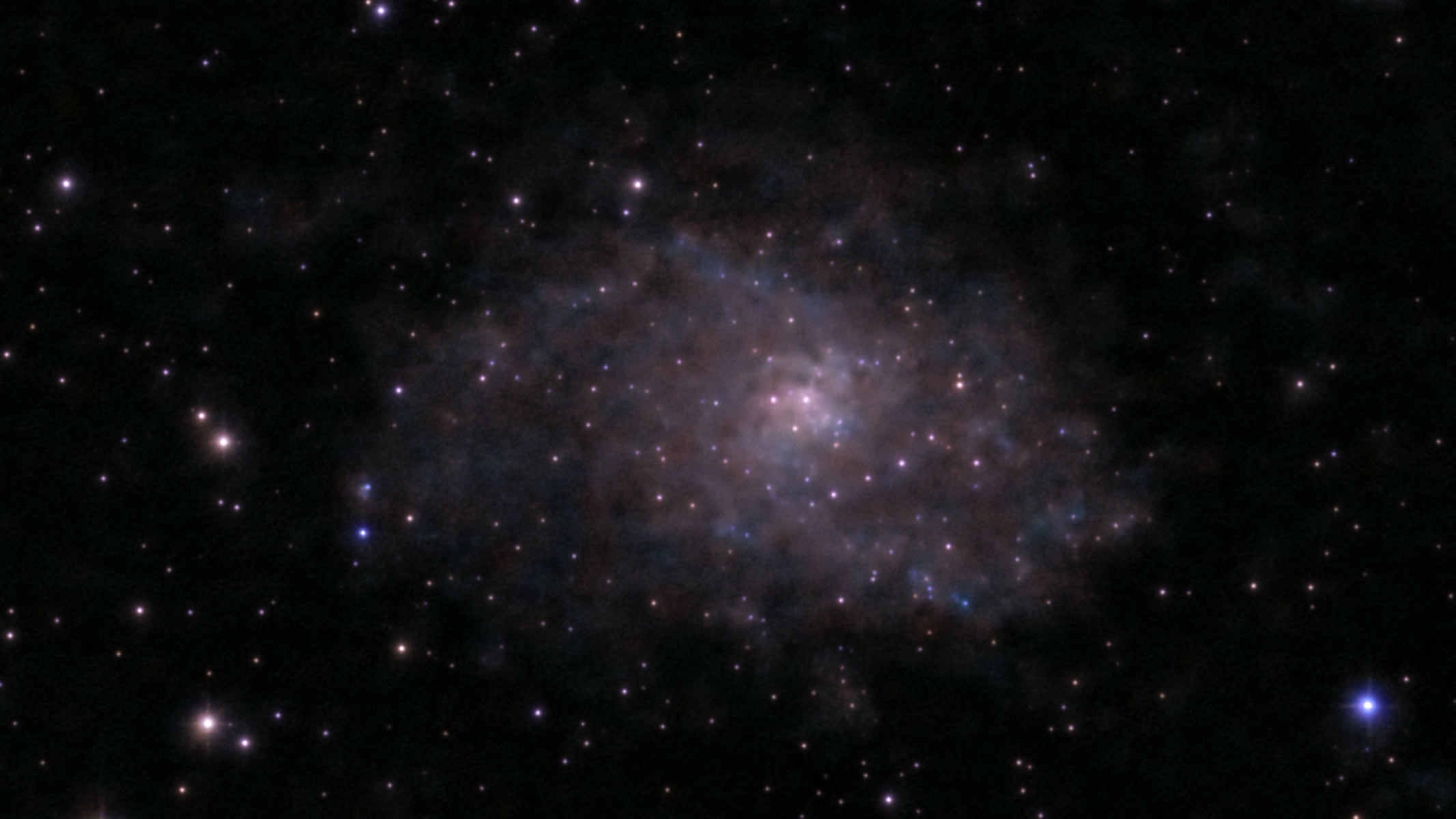
Nov. 20- Dark skies make it easier to glimpse galaxies
On Nov. 20, it will be the new moon, and the dark skies will bring about more time to image dim space objects with your smart telescope, such as the Triangulum galaxy (M33).
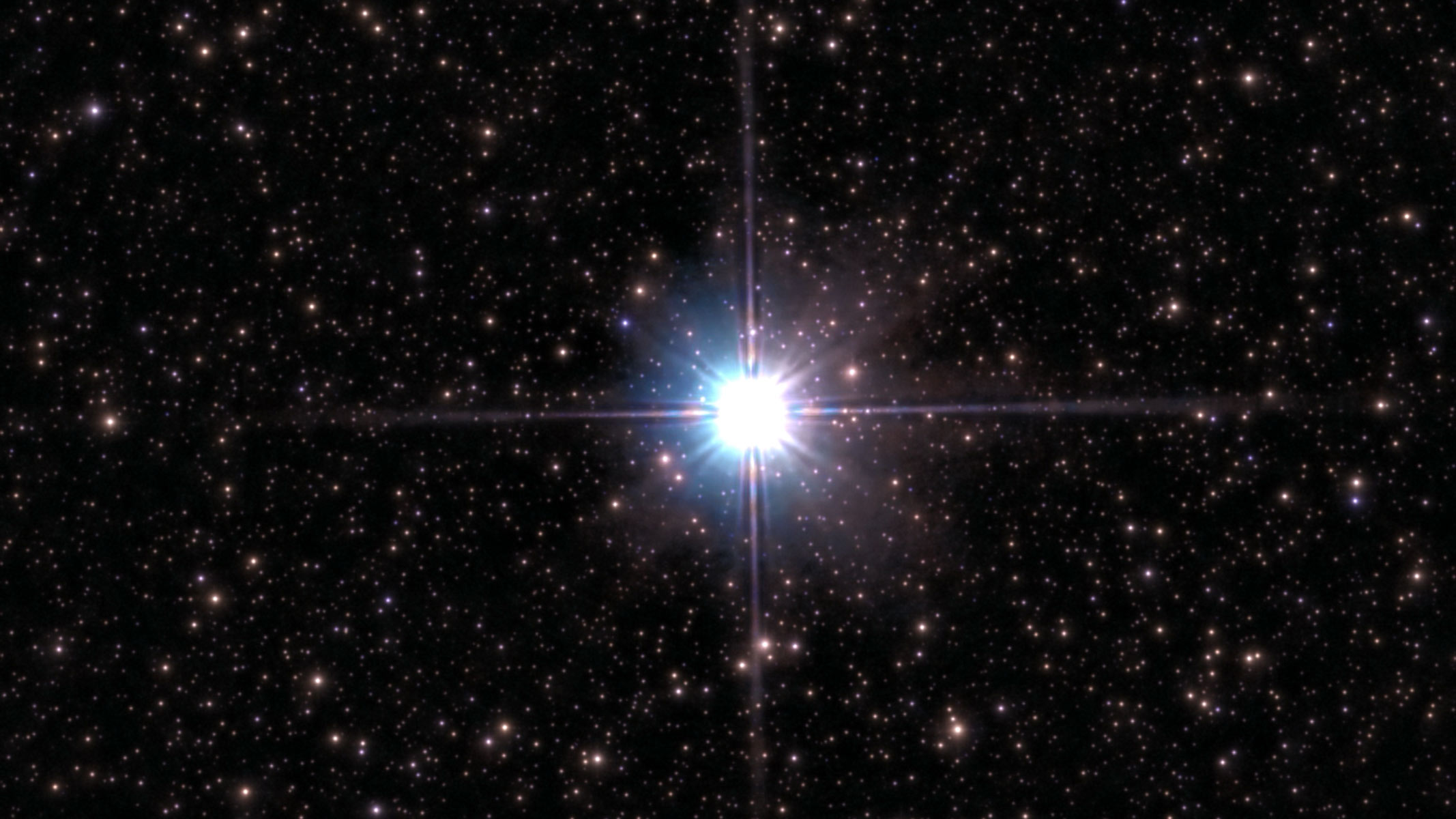
Nov. 26 - Track down the brightest stars
As long as you have clear skies, you will be able to get sharp images of singular bright stars such as 13th brightest Altair in Aquila (pictured), 5th brightest Vega in Lyra and 20th brightest Deneb in Cygnus. Together, they make up the asterism known as the Summer Triangle.

Dec. 4 - Rise of the Cold Moon
The full moon of December, the Cold Moon, will rise on Dec. 4 and will brighten our night skies. It's a great time to try to pick out a range of different lunar seas and craters on the bright surface.
Smart telescope FAQs
When is Amazon Prime Day in October?
Amazon Prime Day in October will run from Tuesday Oct. 7 until Wednesday Oct. 8.
What's the difference between a smart telescope and a traditional telescope?
Unlike traditional telescopes, smart telescopes are designed to be autonomous. With minimal to no set-up required, you should be able to put the telescope outside, sync it with a smartphone app, and start observing and imaging the night sky immediately.
They are especially useful for beginner astronomers with little night sky knowledge, and most have light pollution suppression systems in place to produce good images in cities.
Are smart telescopes only for advanced users?
Not at all. In fact they're a fantastic option for beginners as their fully-automated controls and features do a lot of the work for you! They're super user-friendly and you don't need to have any prior knowledge of telescopes or what's in the night sky, as the smart telescope will have an extensive database of celestial objects to choose from, so you just need to select one (that's visible in the night sky) and it'll take you to it automatically.
The only thing that could potentially be a dealbreaker for beginners is the price, as, unsurprisingly, smart telescopes are a lot more expensive than traditional telescopes. That said, the cheapest option on this list is around $1500. Plus, there's less chance you'll outgrow a smart telescope as your skills grow, so it'll prove to be a good investment in the long run if you can afford it.
Are smart telescopes worth it?
In our opinion, yes. If you're more of a traditionalist then a smart telescope may not be the best choice for you, but we think smart telescopes are a fantastic option for anyone who wants to get into stargazing without the steep learning curve. They're expensive, sure, but you're less likely to outgrow a smart telescope because they cater to users of all skill levels, plus they don't skimp on tech (not to mention, some of them include eyepieces from some of the top camera brands like Nikon).
Update Log
Editor's note 11/18/25 - Updated introduction to include details of Black Friday, skywatching highlights and night sky guide. Skywatching highlights section added.
How we test the best smart telescopes
To guarantee you're getting honest, up-to-date recommendations on the best smart telescopes to buy here at Space.com we make sure to put every smart telescope through a rigorous review to fully test each instrument. Each smart telescope is reviewed based on numerous aspects, from its construction and design, to how well it functions as an optical instrument and its performance in the field.
Our expert staff and knowledgeable freelance contributors thoroughly test each smart telescope. This ensures honest reviewing based on the smart telescope's price, category, and intended use.
With complete editorial independence, Space.com are here to ensure you get the best buying advice on smart telescopes, whether you should purchase an instrument or not, making our buying guides and reviews reliable and transparent.
Aside from this comprehensive list, we do also have brand-specific telescope guides for Celestron and Skywatcher deals for those loyal to their favorite brands. Like this guide, we also keep those updated year-round, so they're always worth checking out. There are plenty of stores out there that dabble in skywatching equipment as well. Do Best Buy sell telescopes? They sure do, and we have a guide on Telescopes at Best Buy.
Still wondering 'what telescope should I buy'? We have also selected our favorite budget telescopes under $500, best beginner telescopes and best telescopes for kids and not just what the best telescope to buy for adults is, in case you're looking for those specifically.
Breaking space news, the latest updates on rocket launches, skywatching events and more!

Kimberley Lane is a landscape & seascape photographer living in South Wales. Originally using photography as a way to cope with health issues, she aims to portray a feeling of calm and peace through her images. Her work has been featured in a number of national photography magazines.
- Jase Parnell-BrookesManaging Editor, e-commerce
- Harry BennettE-commerce Staff Writer
